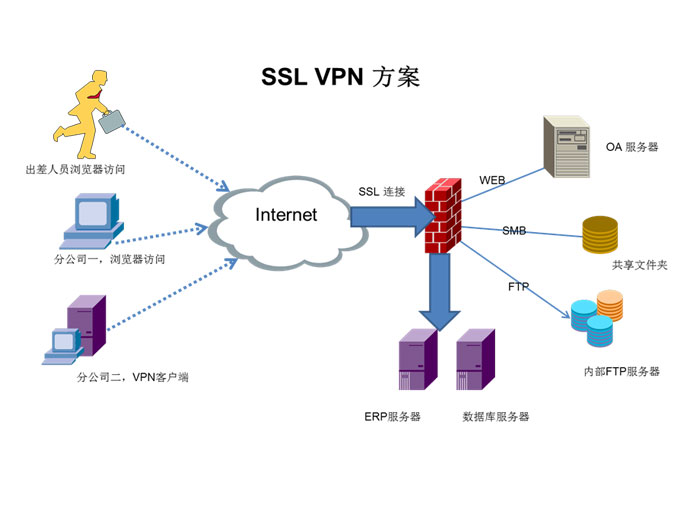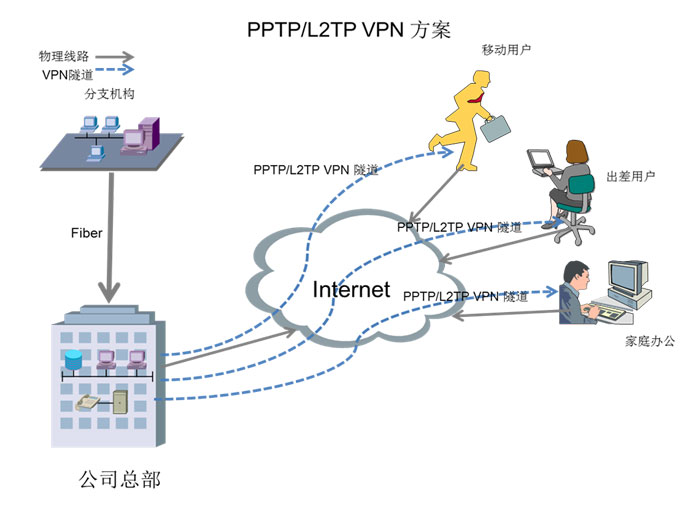Internet VPN
IPSec VPN
Internet Protocol Security (IPSec) VPN is a type of VPN technology that uses the IPSec protocol to implement remote access. IPSec is a standard security framework defined by the Internet Engineering Task Force (IETF) and is used for end-to-end encryption and authentication on the public and private networks.
ISSL VPN
Development of Secure Sockets Layer (SSL) VPN addresses users' requirements for low cost and high performance remote access. Currently, SSL VPN has been widely used in various trades and industries. Users need to consider their own characteristics and different business models to choose suitable SSL VPN products. FMLink provides access for client devices and provides international access for mobile accounts as required by the customers.
PPTP and L2TP
When the PPTP VPN connection is used, TCP port 1723 on the VPN server holds a connection to a random port on the client. PPTP Control Messages are transferred on TCP port 1723 for routine management tasks such as creating, maintaining, and terminating PPTP tunnels (for example, VPN connection setup or release requests). After the client sets up a connection with port 1723 of the server over TCP, the Generic Routing Encapsulation (GRE) based PPP negotiation starts, including all communications such as user authentication and data transmission. (The IP protocol number is 47, and the TCP/IP protocol number is 6). When the VPN connection is released, another PPTP Control Message is transferred on port 1723.
Network diagram:



Characteristic:
PPTP VPN has the following characteristics:
1. The VPN can use a private IP address to connect a VPN server that has a valid IP address through the NAT server.
2. Only user ID authentication is implemented during setup of the VPN connection.
L2TP/IPsec VPN has the following characteristics:
1. The VPN cannot use a private IP address to connect a VPN server that has a valid IP address through the NAT server. (Improved by Microsoft at the end of 2002 (MicrosoftKnowledgeBaseArticle-818043), the VPN incorporates the NAT-T technology to allow the L2TP/IPsec VPN to traverse the intranet.)
2. VPN connection setup requires both key authentication and user ID authentication, wherein key authentication is a type of IPSec authentication.


